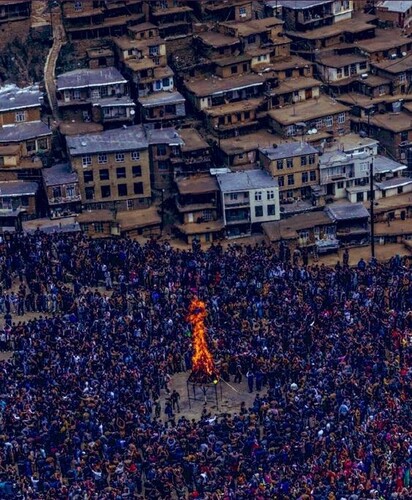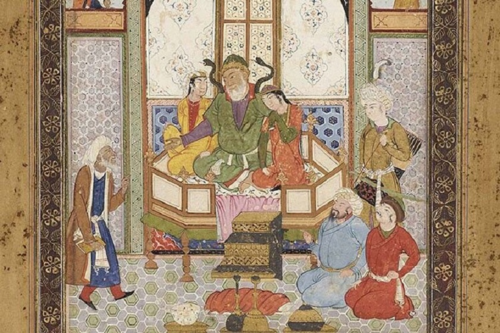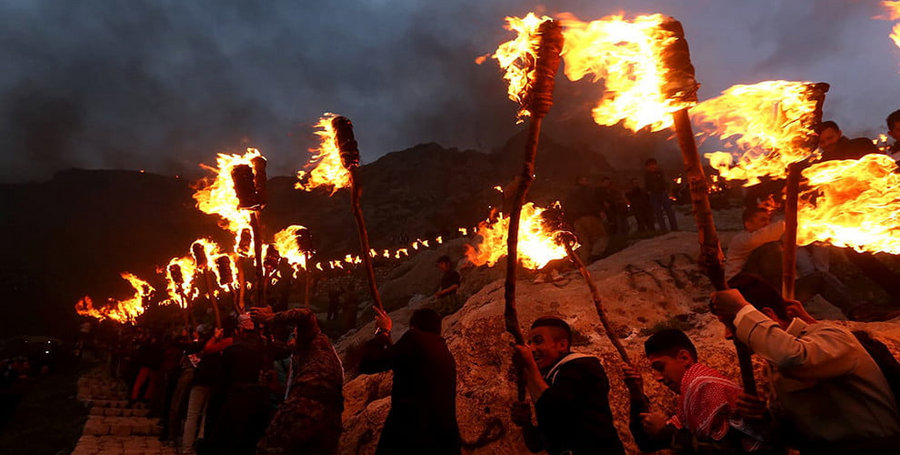To read the previous part click here
In the previous part, I talked about the origin and history of Kurdish Newroz, Newroz and the religion of Mithras, and the story of Zahak and Kawa the Blacksmith; I also had an interview with researchers on the baseless story of Zahak and Kawa the Blacksmith, which we will now continue and focus on the Shahnameh by Ferdowsi and the distortion of history by the invaders of Kurdistan.
Professor Mawlud Ibrahim Hassan said about the story of Zahak and Kawa the Blacksmith: “The story of Zahak and Kawa the Blacksmith goes back to 600- or 700-years BC, but the history of Newroz goes back to 12000 years ago. Among all the major festivals, and in the past, any festival was celebrated on Newroz. However, Newroz has been able to fit into all major celebrations, and in the past, any occasion was celebrated on Newroz. They celebrated their own festival on this day and Zahak and Kawa the Blacksmith have nothing to do with Newroz.”
Hadi Azizi had the same opinion as other researchers. “In ancient Kurdistan, Kawa consisted of the forces of the people who fought against the Assyrian rule against 'Aza Dahak'; it comes from Dahiako, Dahyu, Dahyako, and Duhok, which means both rule and power. It is true that the Kurds were against the Assyrian rule and won, but this is misleadingly written by the Persians and has nothing to do with Newroz.”

Ferdowsi and Shahnameh
Ferdowsi, a Persian poet who completed the Shahnameh in 994, told the story of Zahak and Kawa the Blacksmith. He described Zahak as a cruel man with two snakes on his shoulders eating the brains of Youth. Kawa killed Zahak and it took place in the spring, and they celebrated Newroz because of the victory over the power of Zahak.
Unfortunately, the majority of Kurdish people's thoughts and views on Newroz and Kawa the Blacksmith go back to Ferdowsi's Shahnameh. However, we need to know whether the Shahnameh and its texts, which were later included as poetry, were inherited or stolen. Sometimes one inherits a theme, framework, or similar in history, but takes several stories from different areas that were not Persian geography and were taken, then translated into Persian and presented within the framework of the Shahnameh.

Photo: Shahnameh by Ferdowsi
As historian Hadi Azizi says: For the history of the Shahnameh and the stories contained in the Shahnameh, we must have some special views; no matter whether we say Ferdowsi is an expert or not, he makes some mistakes about the geography that are not his. For example, he talks about the Tigris. The Tigris is in Kurdistan. Or he talks about Zahak and says he lived 800 years! It is a lie and there is nothing like this. In my opinion, 800 years refers to the end of Assyrian rule over the Middle East, which lasted more than a thousand years. What is clear to us is that even after Ferdowsi, these stories have been told correctly in Kurdistan. Thus, the story of the Kurds was transferred from Kurdistan to the region of Arya or Haria, now known as Khorasan. Another issue about Zahak: The word snake is a sacred word among the Kurds, such as story of Shamaran; the snake in the ancient Kurdish religion, in the mythology of the "Noah's Ark" that still exists in the Yazidi religion, warns that the "Noah's Ark" on Mount Sinjar holed and a black snake enters the hole to prevent the ship from sinking to reach Judi Mountain. This is part of the legends in Kurdish stories. The most important word snake in the Kurdish language and the etymology of the Kurdish language and the history mentioned, from the seal of the ancient Sumerian period to the end of the Miloloi, Mitanni, Manna, and Median states, we see that snake is a symbol of power; someone without snakes is sick and has no power. As "Damar (nerve) or Timar (treatment)" and even the snake has been transferred to the medical department, as the logo of medical science that is still used today, because it consists of therapy. Now Ferdowsi comes to dislike the snake and says that there was Zahak who had two snakes on his shoulders and their food was the brains of youth. All this is just imagination and they want to write the history of a nation that has no power misleadingly.

The image is taken from the Shahnameh by Ferdowsi in which Zahak has two snakes on his shoulders
They have an old saying: "If a sheep is left in the desert, the wolf will eat it." That is, without an owner and a shepherd, it becomes food for wolves. This proverb tells us that when the Kurds do not own Newroz, others will own it.
According to Zainal Abedin, the Persians were nomadic people who invaded Iran. The Persians came from India and were a poor group who came to the Kurds and Kurds called them "parsak" (In Kurmanji literature, a poor person who walks the streets asking for money or something from people is called a parsak). They later became known as Pars (Persian), built an empire, and conquered the ancient history and land of the Kurds, the first peaceful nation in the Zagros and the Middle East.
This article continues and in the next section highlights the importance of Newroz in Kurdish folklore and the impact of Newroz on the process of nation-building.








